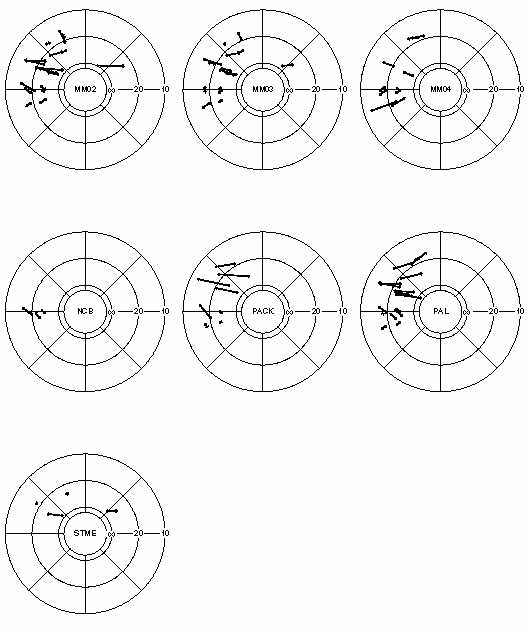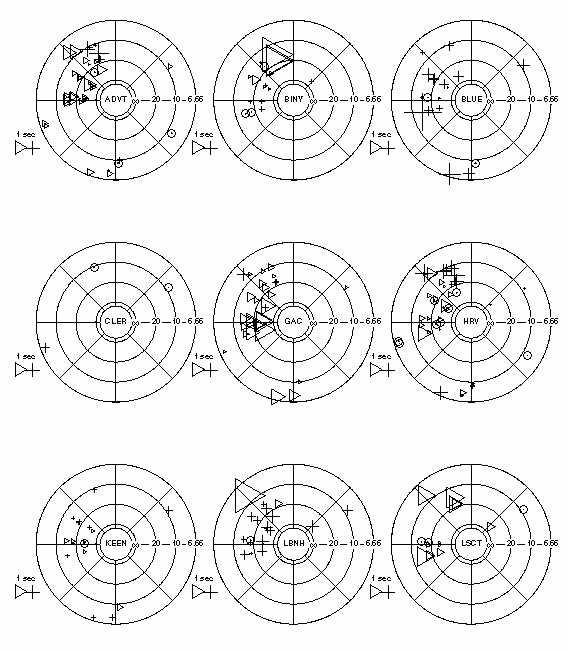
Figure 1. Map of the study area. Wide dashed line shows the transition from Grenville Orogen to the Appalachian Orogen, with the Adirondack Mountains shown in grey. (Postscript Version).

Figure 1. Map of the study area. Wide dashed line shows the transition from
Grenville Orogen to the Appalachian Orogen, with the Adirondack Mountains
shown in grey. (Postscript Version).

Figure 2. Seismic stations used
in this study. Permanent installations (boxes) belong to US and Canadian national
networks, IRIS GSN and LDEO. Temporary deployments include MOMA, ABBA
and stations deployed by the authors (see Table 3). The network configuration shown was deployed during the spring and summer of 1995. (Postscript Version).

Figure 3. Locations of earthquakes recorded by the network. Events arriving from
the west dominate the dataset. (Postscript Version).
 |  |
 |  |

Figure 6. A histogram of relative traveltime delays determined for the network.
The majority of delays do not exceed 1.5 s. (Postscript Version).
 |  |

Figure 8. Variation of fast direction with backazimuth. All stations in the region
appear to have the same pattern. Crosses show all measurements, circles identify measurements with ![]() . Predicted patterns of fast direction variation for two-layer models with hexagonal (dashed line) and orthorhombic (solid line) symmetries match the observations. The model was developed for station HRV [Levin et al., 1999], and is presented in Table 3. (Postscript Version).
. Predicted patterns of fast direction variation for two-layer models with hexagonal (dashed line) and orthorhombic (solid line) symmetries match the observations. The model was developed for station HRV [Levin et al., 1999], and is presented in Table 3. (Postscript Version).

Figure 9. A schematic representation of the model for seismic anisotropy distribution under HRV. Station location is indicated by the triangle. See
Table 3 for model parameters. (Postscript Version).

Figure 10. Regional variation in the pattern of fast direction change with backazimuth.
Only high quality observations (circles from figure 9) are retained. (Postscript Version).

Figure 11. Changes in the pattern of fast direction change with backazimuth resulting
from minor perturbations to the anisotropic model shown on Figure 9 and in Table 3. Thicknesses of two anisotropic layers in the HRV model (solid line) were perturbed by ![]() km, with the total thickness of
the model being preserved. Dashed line shows a case of the thinner upper layer, dotted
line - a thicker upper layer. The deviations of the pattern are comparable to those
seen in the data. (Postscript Version).
km, with the total thickness of
the model being preserved. Dashed line shows a case of the thinner upper layer, dotted
line - a thicker upper layer. The deviations of the pattern are comparable to those
seen in the data. (Postscript Version).

Figure 12. Distribution of shear velocity in the best-resolved region
of the tomographic model (100 - 200 km deep). Velocity varies by ![]() ,
with lateral scale of anomalies being between 100 and 200 km. (Postscript Version).
,
with lateral scale of anomalies being between 100 and 200 km. (Postscript Version).